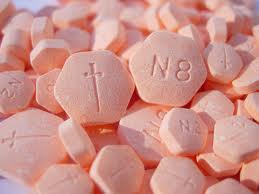
An Expert Talks About Suboxone: Dr. Steven Scanlan of Palm Beach Outpatient Detox
Steven Scanlan, M.D. is board-certified in psychiatry and addiction medicine. In his practice, Palm Beach Outpatient Detox (PBOD), on the Florida coast, he has detoxed more than a thousand patients off many drugs, including alcohol, benzodiazepines (Valium, Xanax, etc.), and sleep aids. But his specialty is opiate detox.
Scanlan has been practicing as medical director of PBOD for about two years. His practice, he said, is located in an area where more than two-thirds of all oxycodone prescriptions in the nation are issued—the south Florida coast that has become notorious for its “pill mills.”
Scanlan said 70 percent of his patients come to him addicted to oxycodone at levels of about 300 to 600mg per day. About 20 percent also come in with alcohol problems. “The rest use Vicodin and Ultram,” and a few come in addicted to Fentanyl, he said.
And then there are the increasing numbers who come to him desperate to get off Suboxone—a relatively new drug that combines buprenorphine, a synthetic partial-agonist opioid, with another drug to prevent abuse. Suboxone (commonly known as “Sub” by people with addiction) is used in opiate detox and maintenance… and gaining ground on the U.S. black market.
Scanlan has seen Suboxone work brilliantly as a detox tool, and dangerously as a maintenance drug.
I first heard Scanlan speak on the sadly now-defunct podcast Afflicted and Affected. Two reasons I was eager to talk to him…
First: Scanlan chose addiction medicine as a result of his own recovery from opiate addiction. He understands addiction from personal and professional experience. While training to become an anesthesiologist Scanlan became addicted to Fentanyl, a strong opioid used in surgical procedures and for severe pain. After trying many times to quit on his own, he found a physician who helped him detox over two weeks using Subutex—plain buprenorphine—and other medications to ease the detox symptoms. He joined a recovery program, then decided he was well equipped to help others suffering from the same problem. Many of his physician colleagues didn’t like working with addicted patients, but he found he did. In his practice, he doesn’t just dole out drugs; he gives patients 24/7 followup until they’re physically comfortable and involved in some kind of support program.
Second: I wanted to hear his clear-cut ideas about detoxing off opiates. He only does detox. He never does maintenance. “Believe me—it’s much more lucrative to do maintenance, to keep patients on Suboxone,” he said, adding that it’s even more profitable than, for example, doing Botox injections. Hundreds of practitioners—some of them with no experience with addiction—prescribe Suboxone as a maintenance drug, keeping patients on it for years at high levels and charging exorbitant cash fees. But Scanlan doesn’t believe drug-maintenance is appropriate for the vast majority of addicted people—or even safe, because buprenorphine is such a new drug, he says, and its long-term effects have not been adequately observed and researched.
He has said that Suboxone may curb cravings for other opiates and allow people to stop stealing and get their lives in order. But the problem is that, after three months or so, they have terrible difficulties quitting Suboxone because of its sheer strength in binding to opiate receptors, its long half-life, and the fact that it’s a partial-agonist binding to receptors built for full agonists.
I wish I could be the unbiased reporter here, but the recovering addict in me wants to tell you this: When I was detoxing off fentanyl in 2008, I felt so good on Suboxone that I thought about staying on it. Then something happened. I no longer felt so good. My feelings dulled. I no longer wanted food or sex. I realized my body was adapting to the drug—or trying to. And I got scared, and tapered off as quickly as I could.
Scanlan said most people, including physicians, do not comprehend the strength and effects of buprenorphine. “Everything changes in the body when you’re on opiates long-term—the way the body regulates pain, the way it regulates hormone production, sleep, emotions, everything,” he said. And buprenorphine, he stresses, is an opiate. Its effects are not just physical: as a psychiatrist, Scanlan has noticed, for example, that at long-term doses of just 2mg, Suboxone can block almost all of a person’s emotions.
In addition, buprenorphine’s half-life is 37 hours, which means it takes the body more than a day to excrete half the dose. When dosed once a day, the body doesn’t have time to catch up, so the drug builds up in the system. A patient dosing at 8mg (a common low-end maintenance dose) is not only getting 8mg—he’s getting the 8mg, plus the amount not yet metabolized from the day before (4mg). And it stacks up from day to day.
“There’s definitely a risk to going on Suboxone long-term—anything over three months,” he said. “It would be easier to detox patients if they were coming in at a year’s time at one milligram, or a half-milligram, which is where they should be. But they’re always coming in at 16 milligrams. Or four milligrams for four years but really they’ve been at 8 milligrams and they’ve lowered it just before they’ve come to see me. I have to get them to tell me what they’ve REALLY been taking.”
Scanlan is the only professional I’ve ever heard who can explain why the body reacts so differently to Suboxone than to full-agonist drugs like heroin, Vicodin and methadone. Read on…

G: Educate me about buprenorphine.
Scanlan: It’s the most amazing detox medication I’ve ever seen. But for maintenance—it’s harder to get off than methadone. Suboxone is 25-45 times as potent as morphine. It’s the king of the hill in terms of opiates—it displaces every other opiate off the receptors, except for Fentanyl. [Maintenance physicians] use way too much of it. When you build up to a serum level, it’s SO POTENT.
Americans should look at European countries’ use of buprenorphine. They’ve had it much longer than we have. They use lower doses; they have as much maintenance as we do. In Scandinavia, what do you think the number-one most-abused drug is?—buprenorphine. Simple facts: they’ve had it longer, and it’s the most abused drug. That’s what I’d like people to know about.
Buprenorphine is now the 41st most prescribed drug in the U.S. Five years ago, it was the 196th most prescribed. So you can see what a money machine it’s becoming. … The research to get Suboxone approved [by the FDA] was funded in conjunction with the NIH. Until the NIH is run by someone in recovery from addiction, this propaganda will continue. Nora Volkow [director of the National Institute on Drug Abuse (NIDA), a branch of the NIH] is great, she’s smart, I’ve met her, but she doesn’t have a clue.
Why don’t you prescribe Suboxone as a maintenance drug?
I wasn’t against maintenance when I detoxed. But I’ve seen a lot since then. And I had a detox physician who told me, “Do NOT stay on this drug for more than three weeks, or else you’ll be dealing with a whole different problem.”
Buprenorphine is a partial-agonist opiate. It binds to the receptor and only activates it part way. Opiates are meant to bind to the receptors and activate them fully. But if you put something completely foreign in the body like a partial agonist, the body says, “What is this?” and it tries to make homeostasis. It struggles to understand it as a full agonist, and it can’t. There is nothing in nature that is a partial agonist, and our opiate receptors are not designed to operate with partial-agonists.Buprenorphine definitely does something unnatural to the body.
I’m not against maintenance for a certain percentage of the population. I have a friend who runs a methadone clinic, and I think there’s a percentage of patients who need to be on maintenance for the rest of their lives. Perhaps five percent of the [addicted] population. If you want to do maintenance, though, you want to do methadone. Methadone at least has been used for a lot longer, and we understand it better.
How do you conduct detox?
To detox patients off long-term Suboxone, I use clonidine [a blood-pressure medication] and Librium because it’s more water-soluble. [Other fat-soluble benzodiazepines will build up in fat-cells and take longer to excrete.] And I use Darvon, a weak opiate. Its half-life is short. … The Librium is the last to go. And they complain of disturbed sleep. I don’t use Seroquel because it can be abused. I use what acts on the antihistamine and melatonin receptors—the only two receptors they haven’t messed up yet. … It can take five months to get someone off long-term Suboxone.
For a Fentanyl detox, I give them Subutex. Fentanyl detox is the most brutal detox but it has the quickest recovery of the receptors because Fentanyl has such a short half-life.
I tell them to exercise. Studies show that 12 minutes of exercise per day with a heart rate of greater than 120 beats per minute restores the natural endorphin system in half the time. The people who do that, their sleep architecture returns to normal in half the time of people who don’t exercise. Twelve minutes. And of course you can do more.
And you urge them to join a recovery program?
They need some kind of support system.Let me tell you—everyone who’s stayed off Suboxone, they’ve been in AA or NA. Thirty-day inpatient programs have an average rate of 5 percent sober after one year. But from what I’ve seen in my practice, anyone who does an honest fifth step in AA or NA stays sober—the numbers are greater than 50 percent.
Everyone who comes to me, I get them off opiates. One-quarter of the people I treat are sober at six months, and ninety percent of those are actively involved in some program. They’re not just going to meetings or involved in community service—they’re actively seeking some kind of spiritual growth. It all comes down to whether people want to do the work.
What about people who are afraid of becoming depressed after detoxing from long-term use?
I ask them, Was there ever a time you were sober? Did you have a bout of depression before then? If not, then it’s probably substance-induced. You have to take a thorough history. The statistics say: of all people who get clean, 15 percent have mental illness. Maybe a bit higher than the general population.
